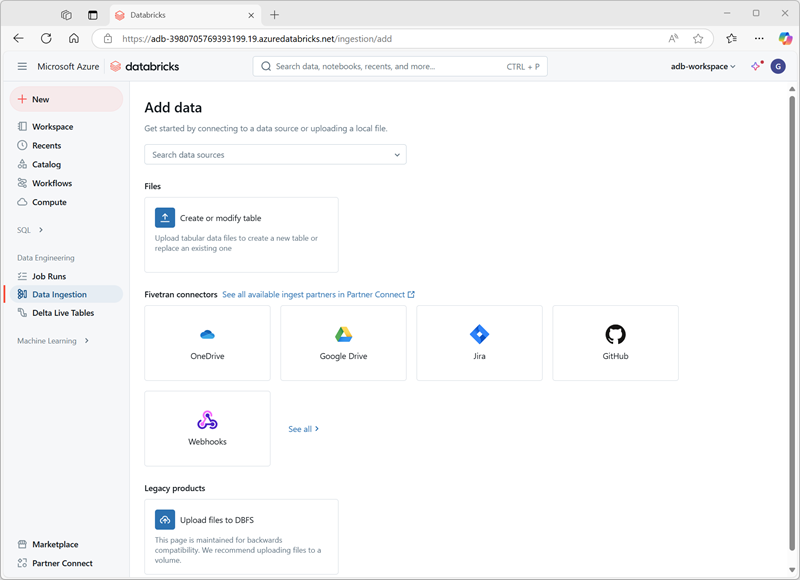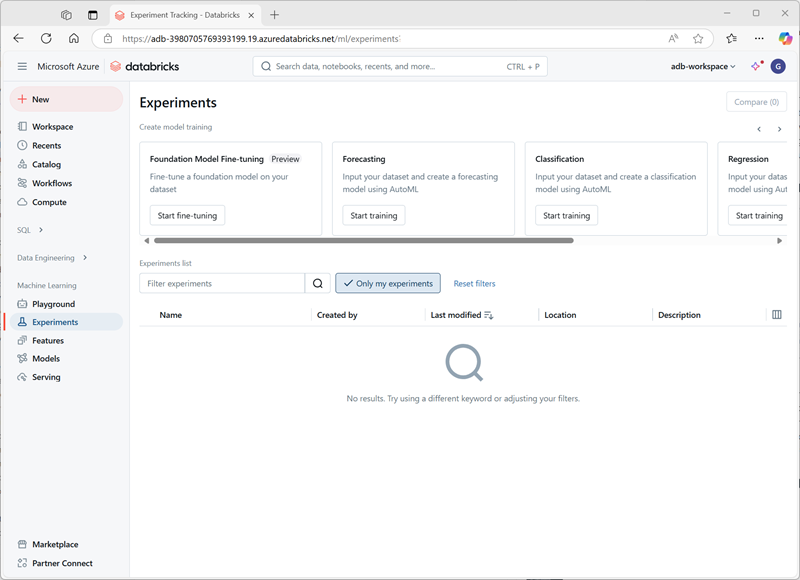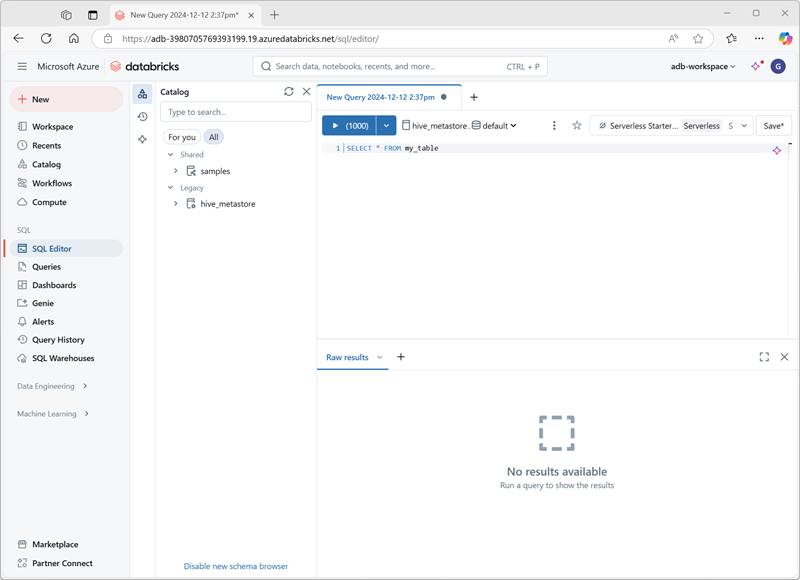Identify Azure Databricks workloads
Azure Databricks offers capabilities for various workloads including Machine Learning and Large Language Models (LLM), Data Science, Data Engineering, BI and Data Warehousing, and Streaming Processing.
Data Engineering
Azure Databricks provides capabilities for data scientists and engineers who need to collaborate on complex data processing tasks. It provides an integrated environment with Apache Spark for big data processing in a data lakehouse, and supports multiple languages including Python, R, Scala, and SQL. The platform facilitates data exploration, visualization, and the development of data pipelines.
Machine Learning
Azure Databricks supports building, training, and deploying machine learning models at scale. It includes MLflow, an open-source platform to manage the ML lifecycle, including experimentation, reproducibility, and deployment. It also supports various ML frameworks such as TensorFlow, PyTorch, and Scikit-learn, making it versatile for different ML tasks.
SQL
Data analysts who primarily interact with data through SQL can use SQL warehouses in Azure Databricks. The Azure Databricks portal provides a familiar SQL editor, dashboards, and automatic visualization tools to analyze and visualize data directly within Azure Databricks. This workload is ideal for running quick ad-hoc queries and creating reports from large datasets.


